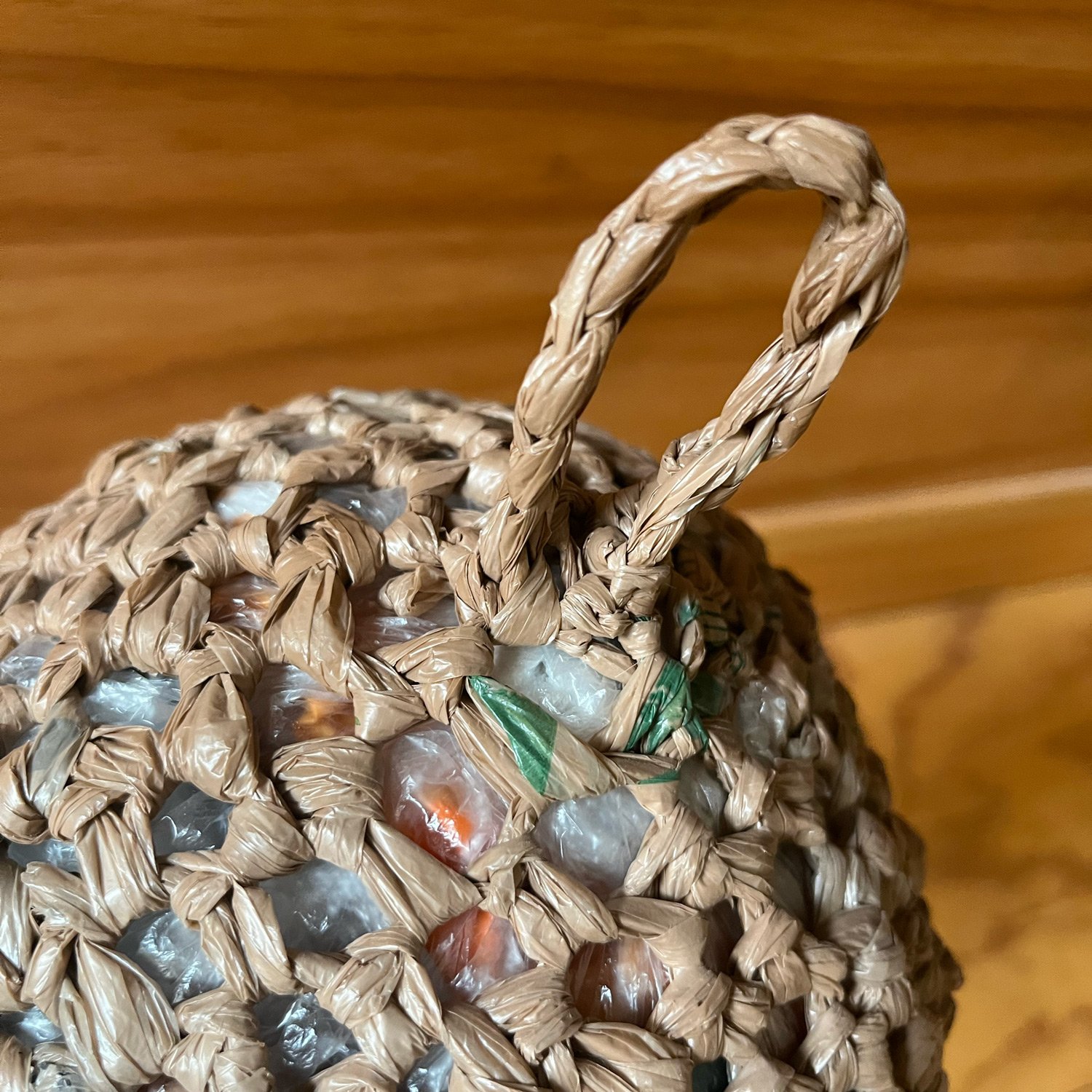FauxNest Decoy
Wasps and hornets give bees a bad name. Unlike honeybees, which are declining, wasps and hornets are increasing in number due to climate change. They build paper nests in trees or under eaves and serve as nature’s sanitation workers but can be aggressive if their nests are disturbed. These nests become vacant in winter; in late fall, wasps stop producing workers and focus on creating queens that hibernate until spring, when they start new nests.
To deter them from nesting in your yard or business, consider placing a FauxNest Decoy in early Spring. Wasps are territorial and typically avoid building nests near each other. These decoys, made from up-cycled plastic bags, can help reduce the wasp population around your food. As summer ends and nature’s bounty dwindles, they will come to your food and you may have to place traps, but this strategy can minimize their presence.
The FauxNest Decoys have been crocheted using approximately 20 old plastic shopping bags. These 20 bags are transformed into plarn (plastic yarn) and then crocheted into the hive. Each hive is then filled with plastic films, bags and scraps. These decoy nests will withstand rain and the outdoor elements and will function for years to come.


